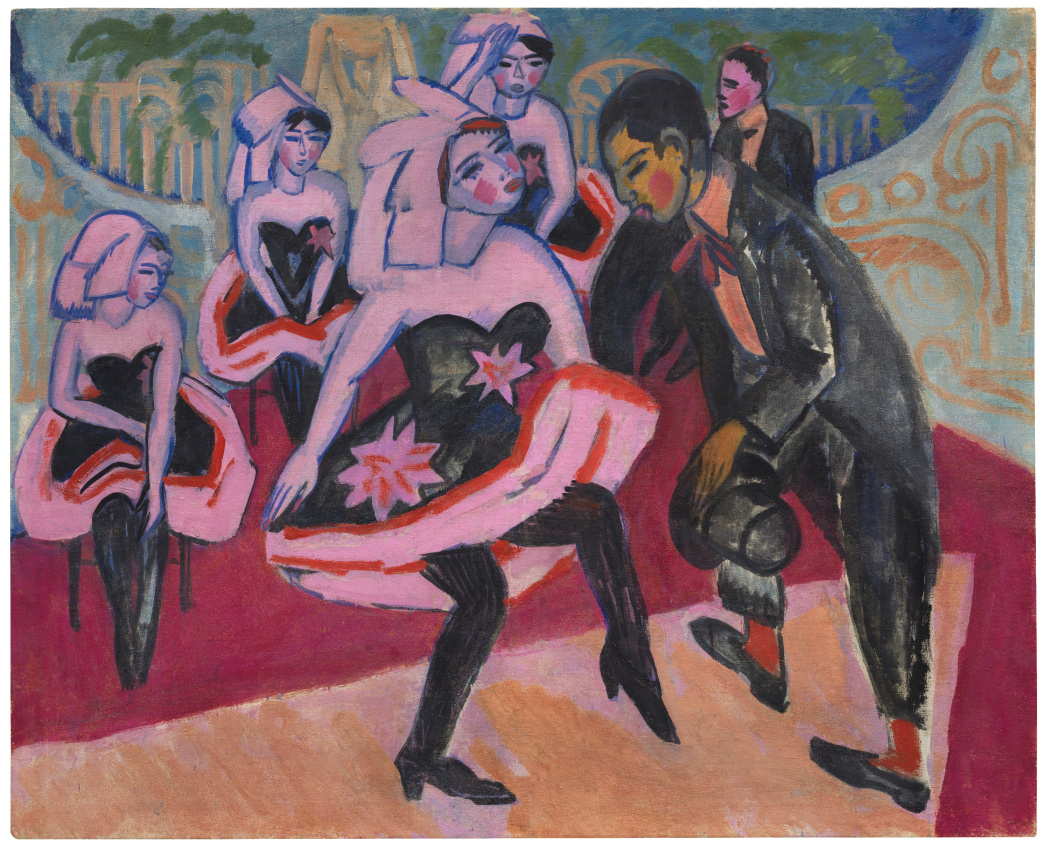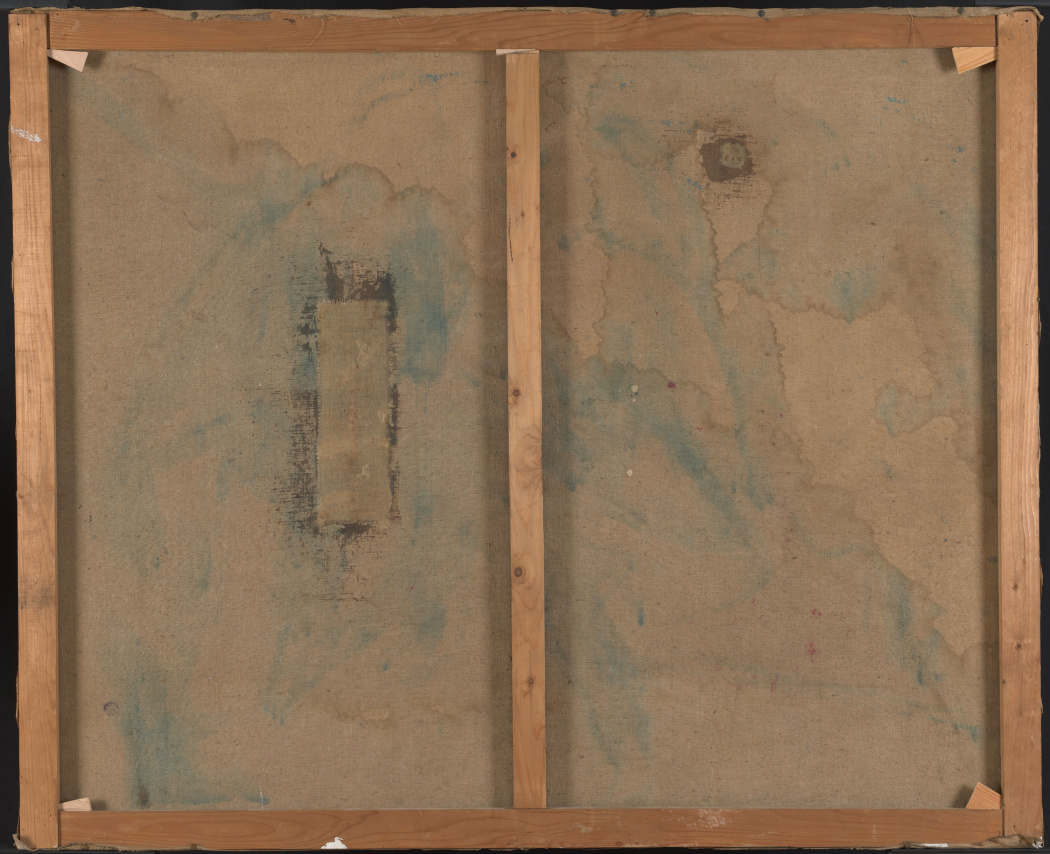News
Collection presentation at the Kunstmuseum Basel
Starting February 7, 2026, we will be presenting the Im Obersteg Collection in the main building of the Kunstmuseum Basel. Well-known and new highlights from the collection will be on display for visitors to rediscover or discover anew.
«Van Gogh, Hodler, and a Cabriolet: The Collector Gertrud Dübi-Müller» from September 2026 at the Kunstmuseum Basel
The major special exhibition «Van Gogh, Hodler and a Convertible. The Collector Gertrud Dübi-Müller» will open in September 2026 in the new building of the Kunstmuseum Basel. It is curated by the foundations curator Géraldine Meyer for the Kunstmuseum Basel.
More information at: Van Gogh, Hodler und ein Cabriolet – Kunstmuseum Basel
The Im Obersteg Collection will be on display at the Musée de l'Orangerie in Paris in 2028
From the beginning of October 2028, the Im Obersteg Collection will be exhibited at the Musée de l'Orangerie in Paris. Masterpieces from the collection will be on display, including Marc Chagall's (1887–1985) Der Jude in Grün, Der Jude in Rot as well as Der Jude in Schwarz-Weiss (1914), Pablo Picasso's (1881–1973) Buveuse d'absinthe (1901), works by Alexej von Jawlensky (1864–1941) and Chaïm Soutine (1893–1943).
More detailed information will follow on the museum's website: Musée de l'Orangerie
Ernst Ludwig Kirchner's Tanz im Varieté: A new Highlight of the Im Obersteg Collection
Ernst Ludwig Kirchner’s (1880–1938) Tanz im Varieté was considered lost for a century. In June 2024 it became part of the Im Obersteg Collection and will be on display to the public after extensive restoration work.
A scene with a finger on the pulse of its time: in Tanz im Varieté, Kirchner shows the cakewalk, a dance that became popular in Europe at the beginnig of the twentieth century. It originated during the time of slavery in the USA as a parody of the dances of white culture. Competitions were organized in this caricaturing dance style, with the winners receiving a cake as a prize—hence the name Cakewalk. In the northern states, minstrel shows adopted the dance. There, white people performed in blackface. The cakewalk thus became a parody of the African Americans who had developed it. It was not until the turn of the century that Black dancers were allowed to perform this dance on theatre stages. Performances soon took place throughout Europe and thus found the cakewalk found its way onto Kirchner’s canvas in Tanz im Varieté. In the foreground, a Black man dances with a woman in the spotlight. Other dancers stand behind them in a semicircle. The colored outlines are typical of Kirchner. The entire picture is dominated by shades of red and pink.
However, it was precisely the painting’s distinctive coloring that was unknown for a long time. The work disappeared in a private collection in Baden-Württemberg after its last sale in 1944 and was only known through a black-and-white photograph. The painting was exhibited twice before it was sold: in 1912, one year after it was created, as part of the first and last group exhibition of the artists’ group die Brücke in Berlin, and in 1923 in a solo exhibition dedicated to Kirchner at the Paul Cassirer art salon. It then came into the possession of the Baden-Württemberg family via the Max Glaeser Collection.
Because the work was considered “degenerate art” and therefore endangered, the concerned family hid it on a farm. They stored it in a locked box in a barn. In 1945, the village where the box was located was taken by French troops. They opened the crate and destroyed the decorative frame of the painting. Then they shot and stabbed the canvas once. The bullet went through the head of the dancer in the foreground and a bayonet pierced the torso of her Black dance partner. After the war, the family had the damage restored. Today, these war wounds are mainly visible on the back of the canvas.
The Im Obersteg Collection is delighted to take in this historic work and make it accessible to the public and to researchers.
8 unmissable Exhibitions in Basel in artnet of June 11, 2025
A Basilea la danza di Kirchner che si pensava perduta da decenni in Il Giornale dell'Arte of June 09, 2025
Kirchner perduto e ritrovato in Doppiozero of June 08, 2025
Ernst Ludwig Kirchner painting thought to be lost for decades goes on display in Basel in The Art Newspaper of June 06, 2025
Kirchner Gemälde in Basel ausgestellt im Regionaljournal Basel Baselland of June 03, 2025
Werk ist nach mehr als 100 Jahren wieder zu sehen in der Weiler Zeitung of June 03, 2025
Einst verschollenes Kirchner-Gemälde in Basel ausgestellt in Baseljetzt of June 02, 2025
Kirchner painting on display again in Basel after more than 100 years in blue News of June 02, 2025
«Tanz im Varieté» de Kirchner exposée à Bâle après plus d'un siècle in Lémanleu of June 02, 2025
“Tanz im Varieté” di Kirchner esposto a Basilea dopo un secolo in Swissinfo.ch of June 02, 2025
Basel zeigt Kirchners «Tanz im Variéte» nach aufwendiger Restaurierung in der BZ of April 28, 2025
Verschollenes Kirchner-Gemälde «Tanz im Varieté» in der SRF Tagesschau of November 16, 2024
Sensationsfund kommt nach Basel in Basler Zeitung of June 21, 2024
Sensationsfund kommt für sieben Millionen nach Basel in der BZ Berner Zeitung of June 20, 2024
Sensationsfund kommt für sieben Millionen nach Basel in der BaZ of June 20, 2024
Sensationsfund kommt für sieben Millionen nach Basel im Tagesanzeiger of June 20, 2024
Für 7 Millionen: Basler Stiftung kauft "verschollenes" Kirchner-Gemälde in der FAZ of June 19, 2024
Auktion bei Ketterer im Tagesspiegel of June 15, 2024
Auktionsnachbericht Ketterer im Handelsblatt of June 14, 2024
Tanz im Varieté d’Ernst Ludwig Kirchner retrouvé après 80 ans! in laktu of June12, 2024
Painting banned by the Nazis and lost for 80 years sells for £6,000,000 in Metro of June 11, 2024
Lost painting that was banned by the Nazis sold for €7m at auction in GBNews of June 11, 2024
Höhenflug trotz schlapper Wirtschaftslage im Handelsblatt of June 11, 2024
Expressionisten bringen Millionenerlöse in der Weltkunst of June 10, 2024
Expressionisten bringen Aktionshaus Millionenerlöse in der Süddeutschen Zeitung of June 07, 2024
Expressionisten bringen Aktionshaus Millionenerlöse im Wochenblatt of June 07, 2024
Sieben Millionen für verschollen geglaubtes Kirchner-Gemälde in PNP of June 07, 2024
Sieben Millionen für verschollen geglaubtes Kirchner-Gemälde in der Zeit of June 07, 2024
Expressionisten bringen Aktionshaus Millionenerlöse in der Zeit of June 07, 2024
Spitzenwerke des Expressionismus unterm Hammer in der Abendschau der Süden of June 06, 2024
Familiensache in Die Presse of Juni 02, 2024
Bild mit Schussloch in Süddeutsche Zeitung of May 25/26, 2024
Ungekünstelte Inspiration in Kunst und Auktion of May 17, 2024
Kirchner in Riem in tz of May 8/9, 2024
Ikonen unterm Hammer in Art plus Auktionen of May 2024
Jahrzehntelang verschollenes Gemälde kommt unter den Hammer in Welt of March 18, 2024
Verschollenes Kirchner-Gemälde aufgetaucht im BR of March 07, 2024
Der Verlorene Kirchner in der Weltkunst of March 06, 2024
Gemälde «Tanz im Varieté» gefunden in Zentralplus of March 06, 2024
Verschollenes Kirchner-Gemälde aufgetaucht im WDR of March 05, 2024
Verschollenes Kirchner-Gemälde aufgetaucht bei Antenne1 of March 05, 2024
Verschollenes Bild von Ernst Ludwig Kirchner aufgetaucht in der Berliner Zeitung of March 05, 2024
Verschollenes Kirchner-Gemälde aufgetaucht in Monopol of March 05, 2024
Kunstmarkt-Splitter in Der Standard Wochenende
Jetzt auch in Farbe! in Welt am Sonntag
Kirchner steps back into view in Antiques Trade Gazette

